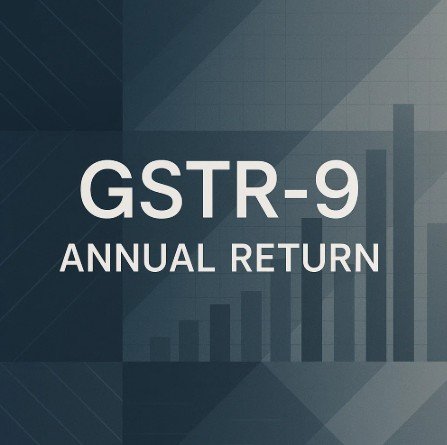
GSTR-9 Annual Return wraps up the details of your monthly/quarterly returns (GSTR-1 and GSTR-3B) into a neat, annual package to ensure you’re playing by the GST rules.
Table of Contents
What’s GSTR-9 Annual Return, and Why Should You Care?
GSTR-9 Annual Return is your business’s yearbook—a consolidated summary of all sales, purchases, and taxes (CGST, SGST, IGST) you’ve reported during the financial year. If your annual turnover is over ₹2 crores, it’s mandatory. For turnovers below ₹2 crores, it’s optional—but a good idea to file anyway!
Who’s In and Who’s Out?
Must File GSTR-9:
- Regular Taxpayers: Businesses registered under standard GST provisions.
- SEZ Entities: Special Economic Zone units and developers.
- Transitioners: If you switched from the Composition Scheme to a regular taxpayer during the year.
Exempt from Filing GSTR-9:
- Composition Taxpayers: They file GSTR-9A instead.
- Casual Taxpayers: Businesses with temporary operations.
- Non-Resident Taxpayers: For those doing taxable business in India but residing abroad.
- ISD & OIDAR Providers: Input Service Distributors and Online Information and Database Access or Retrieval service providers.
Types of GST Annual Returns
Here’s a quick guide to annual return types:
- GSTR-9: For regular taxpayers with turnover over ₹2 crores.
- GSTR-9A: For Composition Taxpayers (details of quarterly filings).
- GSTR-9C: For businesses with turnover exceeding ₹5 crores, requiring reconciliation with audited financials.
📑 Documents You’ll Need for GSTR-9 Annual Return Filing
Let’s keep this list short and sweet:
- Monthly Returns: GSTR-1, GSTR-3B, and GSTR-2A.
- Financials: Profit & Loss account and balance sheet.
- Reconciliation Statement: GSTR-9C (if applicable).
🔧 How to File GSTR-9 in 6 Easy Steps
- Log In: Head to the GST portal and click on ‘Annual Return.’
- Choose Year: Select the relevant financial year.
- Fill Details: Enter details of sales, purchases, and Input Tax Credit (ITC).
- Preview: Review the form for accuracy.
- Compute Liability: Calculate late fees (if any) and pay via your cash ledger.
- Submit: Use a Digital Signature (DSC) or Electronic Verification Code (EVC) for final submission.
🗓️ Deadline Alert!
GSTR-9 is due by 31st December of the following financial year. Extensions? The GST department might give you a breather, but why wait till the last minute?
🚨 Late Filing: What’s the Damage?
- Fee: ₹200 per day (₹100 for CGST + ₹100 for SGST).
- Cap: 0.25% of your turnover in the state/UT.
Pro tip: Avoid penalties by letting Compliance Monk handle it for you.
🤝 Why Choose Compliance Monk?
Filing GSTR-9 can be as easy as a walk in the park—with us by your side. Here’s how we simplify it for you:
- 👨💻 Expert Guidance: Our GST pros walk you through the process effortlessly.
- ✅ Accuracy Guaranteed: We cross-check your GSTR-1, GSTR-3B, and GSTR-2A to ensure error-free submissions.
- ⏰ Timely Reminders: Stay ahead of deadlines with proactive alerts.
- 🔄 End-to-End Support: From reconciliation to submission, we’ve got you covered.
🚀 Start Your Stress-Free GST Journey Today!
At Compliance Monk, we’re all about making GST filing a breeze. While you focus on growing your business, we’ll handle the compliance.
📞 Contact us now to file your GSTR-9 and ensure your business stays compliant—without breaking a sweat!
FAQs on GSTR-9 Filing
1. What is GSTR-9?
GSTR-9 is an annual return that consolidates all GST-related transactions, including sales, purchases, and tax details, made during a financial year. It is mandatory for regular taxpayers with a turnover exceeding ₹2 crores.
2. Who is required to file GSTR-9?
All taxpayers registered under the GST system, except the following, must file GSTR-9:
- Composition taxpayers (file GSTR-9A instead)
- Casual taxable persons
- Non-resident taxpayers
- Input Service Distributors (ISD)
- OIDAR service providers
3. What is the turnover limit for filing GSTR-9?
Filing GSTR-9 is mandatory for taxpayers with an annual turnover exceeding ₹2 crores. For those below this threshold, filing is optional.
4. What is the due date for GSTR-9 filing?
The due date for GSTR-9 filing is 31st December of the subsequent financial year, unless extended by the GST authorities.
5. What happens if I fail to file GSTR-9 on time?
A late fee of ₹200 per day (₹100 CGST + ₹100 SGST) is levied for delayed filing, capped at 0.25% of the taxpayer’s turnover in the state or union territory.
6. What is the difference between GSTR-9, GSTR-9A, and GSTR-9C?
- GSTR-9: Filed by regular taxpayers with annual turnover above ₹2 crores.
- GSTR-9A: Filed by taxpayers under the composition scheme.
- GSTR-9C: A reconciliation statement between GSTR-9 and audited financial statements, mandatory for taxpayers with turnover exceeding ₹5 crores.
7. What documents are required for filing GSTR-9?
- Monthly GST returns (GSTR-1, GSTR-3B, and GSTR-2A)
- Annual financial statements (profit & loss account and balance sheet)
- Reconciliation statement (GSTR-9C) for applicable taxpayers
8. Can I revise GSTR-9 after submission?
No, GSTR-9 cannot be revised once filed. Ensure all details are accurate before submission.
9. Is it mandatory to file GSTR-9 for a business registered for only part of the financial year?
Yes, if the business was registered as a regular taxpayer for even one day during the financial year, GSTR-9 filing is mandatory.
10. Can I file GSTR-9 online?
Yes, GSTR-9 can be filed online through the GST portal. Alternatively, it can also be filed offline using the provided utility.
11. What is the penalty for not filing GSTR-9?
Non-filing attracts a late fee of ₹200 per day (₹100 CGST and ₹100 SGST) and may lead to further compliance issues or legal penalties.
12. What are the auto-populated fields in GSTR-9?
Some fields in GSTR-9, such as tax paid (Table 9) and details from GSTR-1 and GSTR-3B, are auto-filled based on previously submitted returns.
13. Can businesses with no transactions during the year file a Nil GSTR-9?
Yes, businesses with no outward or inward supplies, ITC claims, or other activities during the financial year can file a Nil GSTR-9.
14. How does Compliance Monk help with GSTR-9 filing?
Compliance Monk simplifies the process by:
- Offering expert guidance and data verification
- Ensuring accurate filing before deadlines
- Providing timely reminders and comprehensive support
15. How can I file GSTR-9 offline?
Download the offline utility from the GST portal, fill in the required details, and upload the completed file back to the portal for submission.
